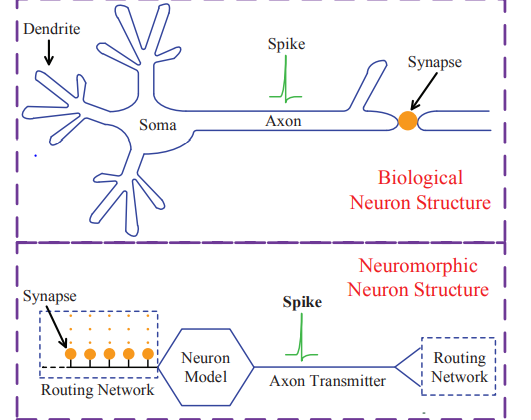
Neuromorphic computing is very interesting subject to develop high performance systems and intelligent computer. Though there are variety of solutions for neuromorphic systems based on different hardware technology and software programming schemes but there has yet to be a common accepted one. The neurosynaptic core is combination of digital neurons with large synaptic array. Based on it, a scalable, efficient, and flexible non–von Neumann architecture using silicon technology was demonstrated. The aim of this is to build neurosynaptic supercomputers by creating systems with hundreds of thousands of cores, hundreds of millions of neurons, and hundreds of billions of synapses. In general, to simulate the behaviours of one billion neurons that is equal to about 1% as many as that in a human brain.
A lot of work has been put to develop various solutions on this topic i.e., neuromorphic computing systems, like analog circuits-based type, mixed-analog-digital type, non-volatile memory based or memristor-based type and so on. Each of this has its special advantages and limitations, and that’s why till now there has not been a common solution accepted one. Also, we have to look for some new technological solutions as this topic is in developing process.
Theoretical consideration for the development of a brain inspired computing system.
Neuromorphic computing system is one kind of brain inspired computing system and according to that one has to set new system design rule. As mentioned in Figure, the neuromorphic design rule includes element or system model, hardware architecture, rout computing algorithms. It was built based on the cu in brain science such as the neuron and synapse structure and connection configuration, the connectivity, characteristics of the mammalian brain, neuron cluster, hierarchical information flow, whole brain model and etc.
